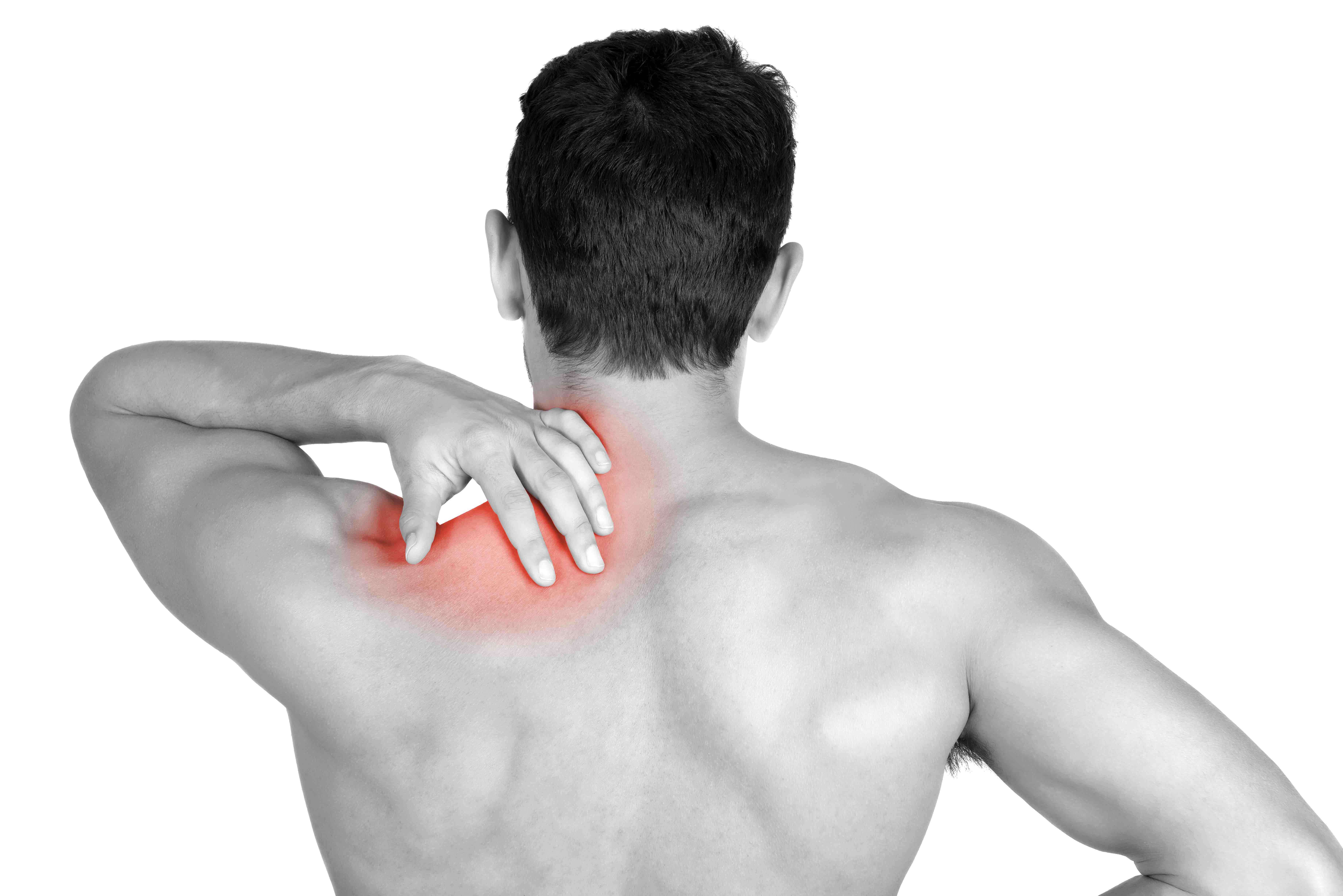Trapezius Strain
What is a Trapezius Strain?
It is defined as a muscle strain of the upper back and is a stretching or tearing of the trapezius, which is one of the major muscles of the back responsible for moving, rotating, and stabilizing the shoulder blade and extending the head at the neck. This large muscle group spans the upper back, shoulders and neck. These muscles are commonly called the “trap” muscles.


Common Causes
Trapezius strains are commonly caused by overuse, but can also be caused through an acute injury such as a violent twist or collision. In the case of overuse, trapezius strains tend to occur when repetitive, low-impact activities are performed over a prolonged period of time. Continuous use of the shoulder muscles over a span of time can cause stress on these muscles, therefore something as simple as carrying a heavy bag for hours at a time can cause trapezius pain. These muscles are also commonly injured during weightlifting, or during contact sports.
An acute muscle injury occurs suddenly when the muscle experiences trauma, such as a hard fall or car collision. When there is a hard blow to the trapezius, there may be a bruise as well as other muscle strain symptoms. Pain and stiffness from an acute injury will be felt immediately.
Symptoms of a torn or strained or torn trapezius
Depending on which part of the shoulder muscles is injured, symptoms of a trapezius strain vary from a mild muscle strain to a completely ruptured muscle or tendon.
Symptoms may include but are not limited to:
- Muscle stiffness
- Muscles spasms
- Soreness, aching, or burning sensations
- Swelling and possible headaches These symptoms may worsen with activity.
- Decreased range of motion in the shoulders or neck
These symptoms may worsen with activity. Treatment options may include rest, ice and anti-inflammatory medications. Make sure to consult your physician to determine the best treatment options for you.
Preventions and Precautions
One of the most important injury prevention steps you can take to prevent a trapezius strain is to incorporate stretching into your daily routine. Whether it be before a workout, when you get out of bed in the morning, or before you anticipicate lifting a heavy object, stretching helps to loosen up your muscles so they’re less likely cramp or freeze when needed.
Make trapezius stretching and strengthening exercises part of your usual routine, and be careful when exerting your arms and shoulders when lifting something heavy. A trapezius strain may sideline you for a few weeks, but a more serious muscle tear could limit the use of a shoulder or arm for months.
Schedule an appointment with a specialist
Talk to your doctor about any shoulder or neck pain you may be experiencing if you’re concerned that you may have a trapezius strain. If you’re looking to set up an appointment with one of our shoulder specialists here at AOA, contact our 24-hour scheduling department to get set up an appointment today.
F.A.Q.
What is the trapezius strain?
The trapezius is a large muscle that lies in the neck and upper back. This muscle can be injured and cause stiffness, pain, and restricted movement in the area.
What is the cause of a strain in trapezius?
Trapezius strains are caused by poor posture, sudden movements or trauma to the muscle.
How does a trapezius strain be treated?
The treatment for a strain of the trapezius may include rest, ice and physical therapy. Sometimes, surgery or injections may be required to alleviate symptoms.
How long does it take to recover from a strain of trapezius?
Recovery times vary depending on how severe the strain is and what treatment was used. Most patients are able to return to their normal activities within a few weeks or months after treatment.
Is it possible to prevent a strain of trapezius?
To prevent trapezius strains, you need to maintain good posture, perform stretching and strengthening exercises, as well as avoid repetitive or prolonged activities that can strain the muscle.

